Let us understand Value and Reference types in JavaScript in the most detailed way! This is part 2 of the series - 33 JavaScript concepts, every JS developer should know.
Part 1 - Do you understand Call Stacks well?
Value types
We have a variable called firstName, which stores my name,
var firstName = "Rashita Mehta";
Internally, it would be a memory block, with
name of the memory block--> firstName
value --> "Rashita Mehta" (a STRING)
and will have some address, say 1000.
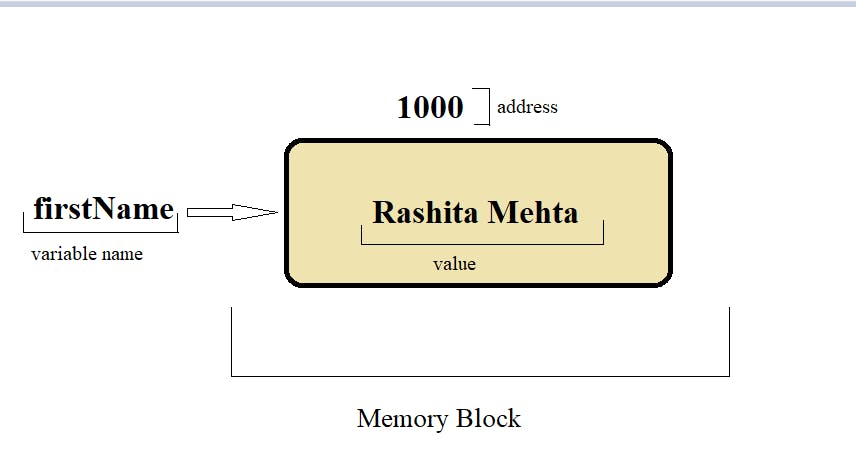
Primitive Types (or Value Types)
- Numbers
- String
- Boolean
- Null
- Undefined
- ES6 Symbols
All the primitive data type variables are stored in the stack memory.
There are two types of memory
- Stack
- Heap
Stack
It is that part of the memory, which is short but stores all the primitive type variables and handles function calls. [Read this to know more about Call Stack]
All the primitive type variables are stored in the Stack part of the memory. For each new variable of primitive type, memory is given in the stack. Whereas, complex data types like objects and arrays are stored in the Heap. (We'll read more about this later!)
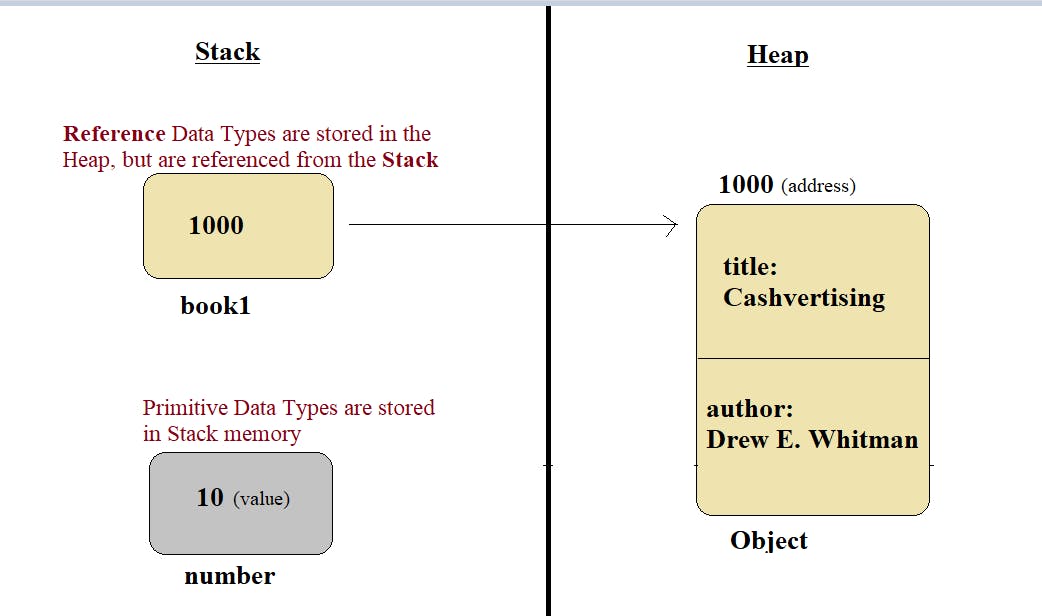
Heap
Heap is that section of the memory, which stores the data types which are much more complex than the primitive ones. Let us see how things work internally in Heap!
Reference Data Types
- Array
- Objects in JavaScript
- Functions (Functions are also objects!)
Reference Data Types are stored in the Heap and referenced thought Stack.
For example I have an array of names:
var names = ["Joe" , "Williams" , "Esma"];
It will be stored INTERNALLY as follows:
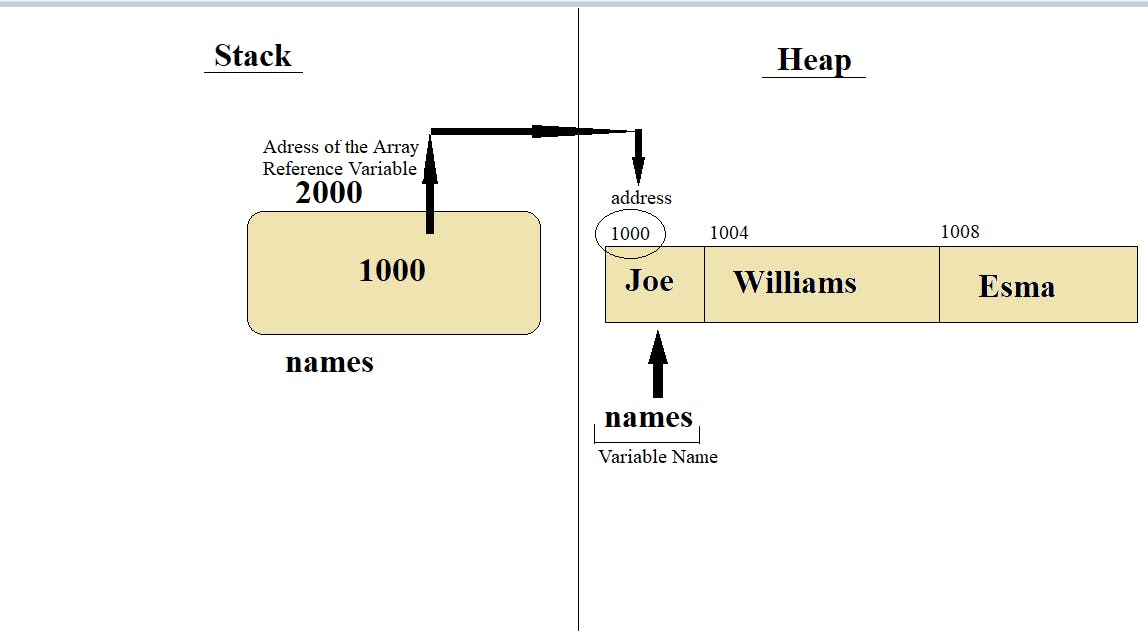
How are complex types stored internally?
- The actual Array or Object is stored in the HEAP.
- It will have some address, let's say 1000 (which is the base address )
- A Reference variable is created in the STACK, which has
reference variable name --> "names"
Value -->address of array/object in the Heap (1000)
and will have some address of its own, let's say 2000.
This simply means that in case of reference data types, the memory is given in the HEAP, and there is a reference to it in the STACK, which contains the address of the actual variable in HEAP.
Some points of difference between Value and Reference variables:
- Copying the variable:
var x = 10;
var y = x;
console.log(x);
console.log(y);
OUTPUT
10
10
Now, if I change the value of x,
var x = 10;
var y = x;
x = 20; //changed the value of x
console.log(x);
console.log(y);
OUTPUT
20
10
This means - when Value (or Primitive) type values are copied, an actual copy is made in the stack and a new memory is given to the variable y. So, when I change the value of x, the value of y remains unchanged.
Understand through steps:
First, x variable is made in the memory (Stack)
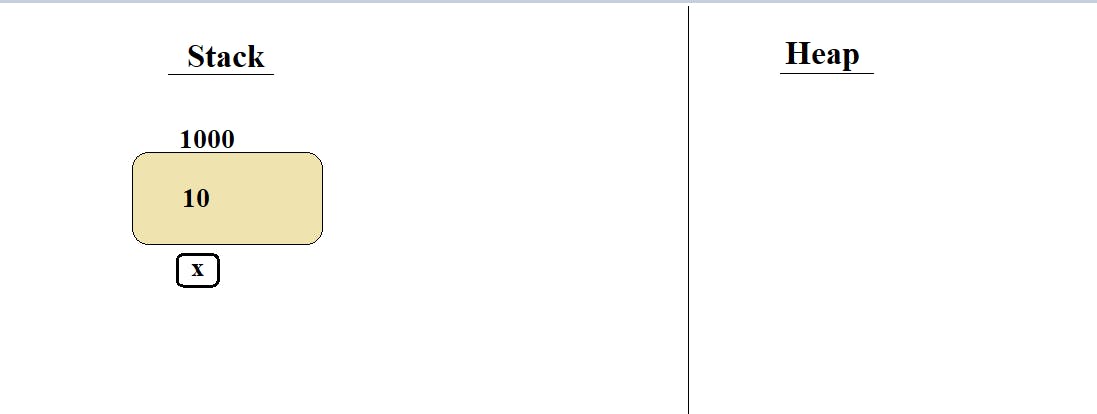
Then a new Variable - y is made through he code
var y = x;The value of x is copied to y and a new memory is given to y.
When we change the value of x, only the value of x changes and the value of y remains unchanged.
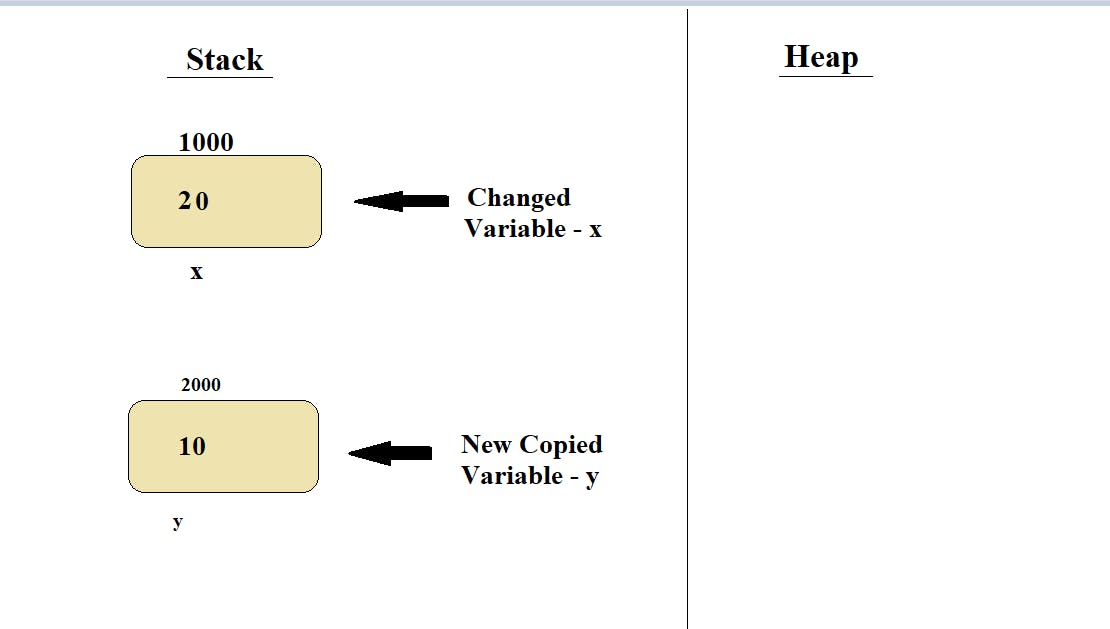
But, this is not what happens in the case of Reference Variables. let us take a look.
var book1 = {
title: "Cashvertising",
author: "Drew E. Whitman",
} //object is created
var book2 = book1; //a copy of book1 is created
console.log(book1.title);
console.log(book2.title)
OUTPUT
Cashvertising
Cashvertising
Now, if I change the title of book1,
var book1 = {
title: "Cashvertising",
author: "Drew E. Whitman",
} //object is created
var book2 = book1; //a copy of book1 is created
book1.title = "Writer's Guide";
console.log(book1.title);
console.log(book2.title)
OUTPUT
Writer's Guide
Writer's Guide
The Title of the book2 also changed, while I changed the title of the book1 only!
Let us see why this happened:
When a Reference Type (or Complex) variable is given memory, it is actually stored in the HEAP and its reference is made in the STACK.

When book2 object is created by copying book1 object, here is what happens:

As we can see that both book1 and book2 refer to the same object, any change in book1 will also reflect in book2.
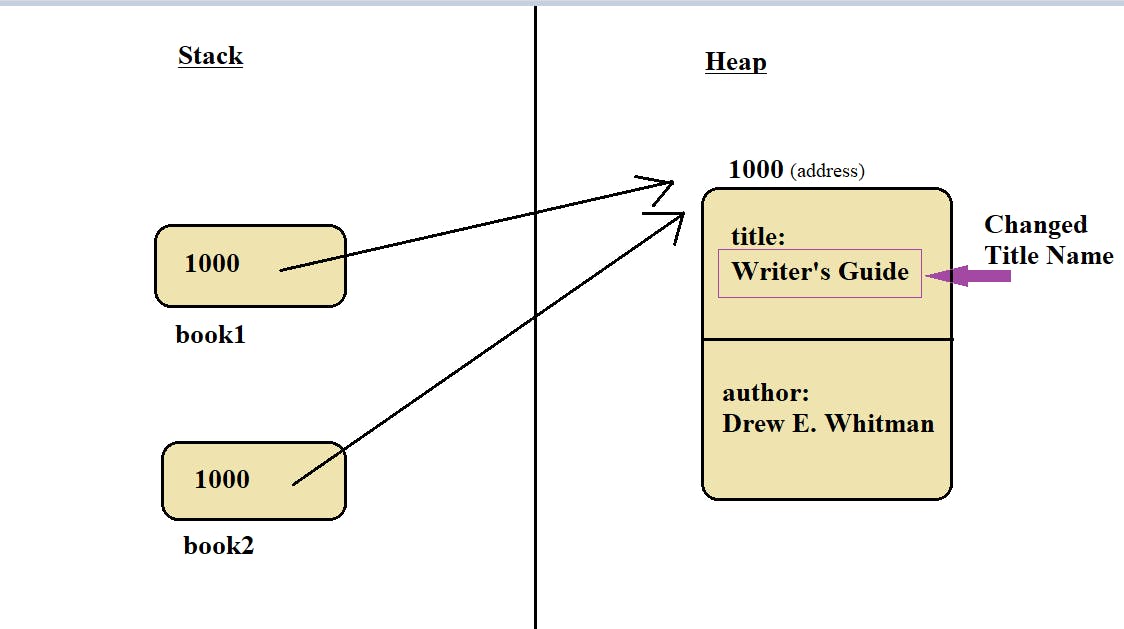
Summary: When a primitive type variable is copied, it is given separate memory in the stack, but when a Reference variable is copied, it refers to the same memory block in the Heap, and a new memory block is not created.
2nd Difference between Value and Reference Variable
Comparison by value:
var a = 10;
var b = 10;
console.log(a==b);
OUTPUT
true //value of a and b is same.
 Similarly, if I take an object (Reference Type data type)
Similarly, if I take an object (Reference Type data type)
var book1 = {
title: "Cashvertising",
author: "Drew E. Whitman",
}
var book2 = {
title: "Cashvertising",
author: "Drew E. Whitman",
}
console.log(book1 == book2);
OUTPUT
false
This is what happens INTERNALLY.
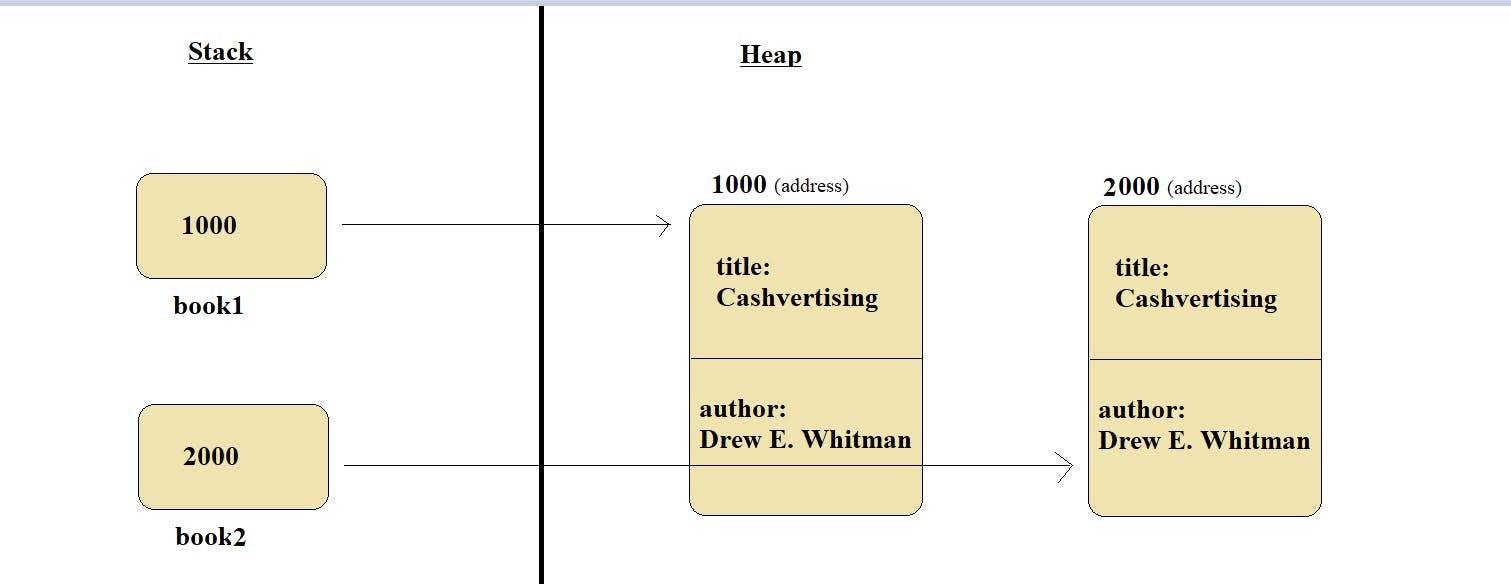
The Value of the book1 is 1000(Address of book1 in HEAP), and
The Value of the book2 is 2000(Address of book2 in HEAP)
This is the reason that book1 == book2 gives false.
Note: You might think that earlier, I gave the same memory block to the same objects, and now, I am giving different memory blocks to them!
The reason is that --> In the first example, I made a copy of the book1. Due to this reason, no new memory was allocated to book2.
But in this example, I am defining the book2 again. We know that I am defining book2 with the same properties as that of book1, but the computer doesn't know! So, it allocates a different memory to each object defined exclusively.
I hope this clears all your concepts about Value and Reference Variables.
This is part 2 of the series - 33 JavaScript concepts, every JS developer should know.
Part 1 - Do you understand Call Stacks well?
Stay tuned for the next part of the series! Good Luck!